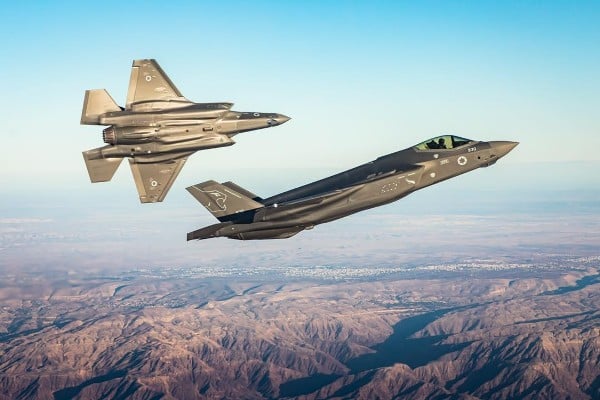Two-week drill follows January’s “Juniper Oak” exercise in Israel.
ByJNS.org
Israeli fighter jets will be seen flying above the Nevada desert on Sunday, which marks the start of a two-week “Red Flag” training exercise, according to the Israel Defense Forces.
The U.S. and Israeli air forces will conduct daily drills involving nearly 100 aircraft. The exercise is being run out of Nellis U.S. Air Force Base, located approximately 8 miles northeast of Las Vegas.
Nellis has hosted the event since 1975, and this version will end on March 24, with special arrangements made for the Israeli visitors to fly on Sunday instead of Saturday due to Shabbat, according to the base.
There are three iterations of the exercise annually, according to the base. One is U.S.-exclusive, one is open only to “Five Eyes” participants (Australia, Canada, New Zealand, the United Kingdom, and the United States), while the third welcomes “an expanded roster of international allies and partners.”
Training exercises will include playing out various combat scenarios, including intercepting enemy aircraft, low-altitude flights and flying in areas protected by surface-to-air missile systems. In addition, an American KC-135 Stratotanker aircraft will conduct a midair refueling of an Israeli Air Force F-35I “Adir” fighter jet.
Subscribe to The JNS Daily Syndicate by email and never miss our top stories
According to the Israeli military, this year’s exercise will mark the first time that IAF F-35I “Adir” and F-15I “Ra’am” aircraft will fly over U.S. territory—seven F-35Is and two F-15Is.
“Red Flag” follows January’s “Juniper Oak” joint exercise with the IDF and U.S. Central Command, which took place in Israel and the eastern Mediterranean Sea. According to the Israeli military, it was the largest exercise conducted with CENTCOM, whose territory includes the Middle East.
CENTCOM expanded its area of responsibility to include Israel on Sept. 1, 2021, taking over from the European Command (EUCOM) in a change announced during the final days of the Trump administration.
Despite its location in the Middle East, Israel had been part of EUCOM’s area of responsibility for several decades, largely to avoid friction between Israel and Arab militaries. However, with deepening ties between Israel and several Arab countries, coupled with growing threats from Iran, a need for better coordination between Israeli and American forces in the region was deemed necessary.
